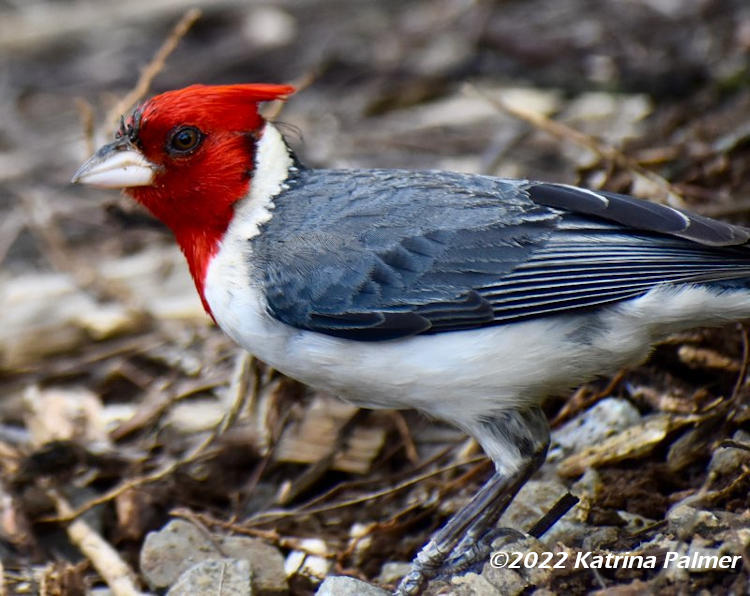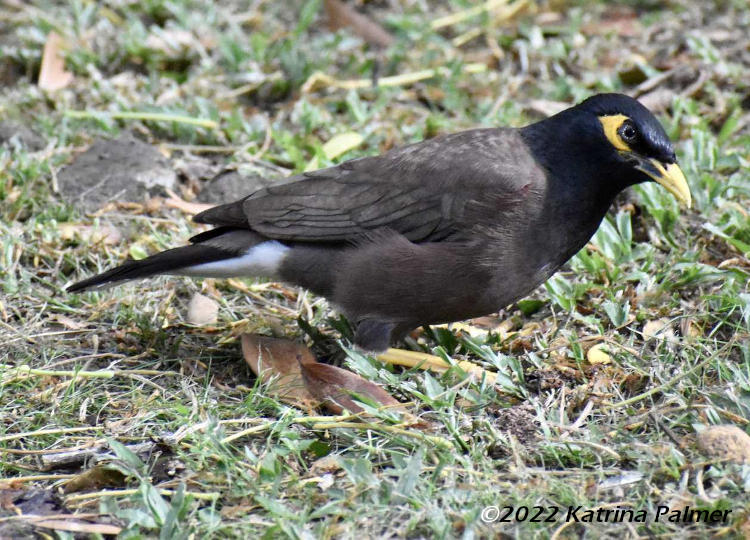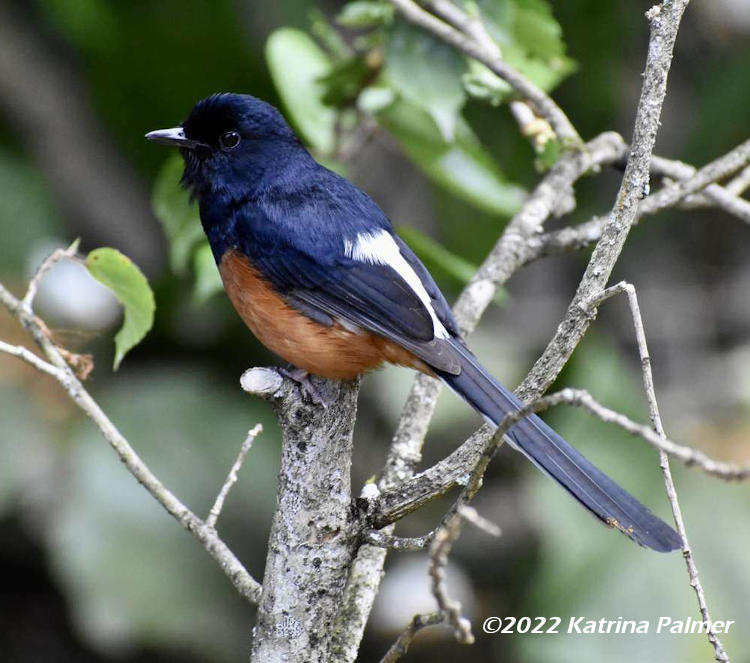Wow, it’s been seven years since the last, but this time it’s from a different journalist, the blog’s official Seems-Foreign-But-It-Technically-Isn’t-Correspondent Katrina Palmer, who is sending me images smugly from Hawai’i, because that’s what one does from Hawai’i. And of course, we could do with a break from the usual fare.
I am receiving these without exposition, so all verbiage and identification is mine, to the detriment of all. Just look at the pictures, okay?

Above and below we have a red-crested cardinal (Paroaria coronata,) which is unrelated to the common northern cardinal that we all know, but is a tanager instead that is, apparently, guilty of identity theft. Or the victim of it – can’t be too sure.

The dark color on top of the bill and the forehead here is not typical, but probably evidence of a political campaign, or maybe a running landing in a muddy area. We will leave the term, “brown-bill” unmentioned.

This is a cattle egret (Bubulcus ibis,) which frankly you don’t have to go to Hawai’i to see (hate to tell them this after they’ve already sprung for the tickets,) but I’ve only ever seen them coastally myself, and this is closer than I’ve ever gotten so, credit to Katrina. As for the prissy air here, it likely comes from being chosen after the cardinals/not-cardinals above – some birds just let their egos run away.
The tan coloration on the head, back, and crop is natural, and not evidence of a guy’s efforts at laundering whites.

Above and below we have a common mynah (Acridotheres tristis,) giving the photographer the stinkeye likely because she interrupted the bird scolding the ground litter.

You know how it is…

Now we have a pair of images of a white-rumped shama (Copsychus malabaricus,) which is the old name and considered inappropriate in today’s culture; the movement is to rename them rump-of-no-color shamas, though typically, no one has bothered to even check with the shamas to see what they prefer to be called.

I had to double-check to make sure I wasn’t actually seeing two different species, mostly because of the shape and size of the head, but I think the difference comes only from whether the feathers are lying perfectly flat or partially erect, though the more appropriate term is now, “semi-unlimp.” You have to appreciate the distinctive line in the crop-top, though.
And finally, we get more in line with the typical blog content.

This is a gold dust day gecko (Phelsuma laticauda,) which is not a gecko that celebrates Gold Dust Day, which isn’t even a recognized holiday anymore, but a day gecko that looks for gold dust. Or something. Many/most geckos are nocturnal, and despite their presence in Florida, I photographed very few while I lived there. But there are a few diurnal species in Hawai’i, and this is one of them, though they can get much brighter in coloration than this. But yes, they look like cartoon caricatures of a lizard, even down to the toes.
Notably, not one of these species is actually native to Hawai’i, which is not a particular accomplishment or goal of Katrina’s – there are a lot of non-native species to be found on the islands, partially due to intentional import, but mostly due to accidental releases that thrive in the habitat and the relative lack of predators. “Native” is of course a loaded term, mostly referring to the species that could be found when Europeans finally arrived at any given location, but since Hawai’i arose from undersea volcanoes, everything thereon (except for the black sand) came along later, so…
Anyway, I know these aren’t Katrina’s normal photographic subjects, nor is she working with focal lengths anywhere near what I am most times, so nice work! We’ll see if further images come along in the next few days.




















































